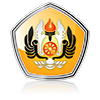Kawasaki Disease: Most common acquired heart
disease?
25 Sep 2020, 23:45 Dandi Gumilar Dibaca : 533
Kawasaki disease (KD) is an acute, self limited vasculitis that typically occurs in young children and was first described by Japanese pediatrician Tomisaku Kawasaki in 1967. Although originally thought to be a rare condition, KD has become the most common cause of acquired heart disease in developed countries. However, in our country, rheumatic fever is still the leading cause. Kawasaki disease is characterized by fever, bilateral nonexudative conjungtivitis, erythema of the lips and oral mucosa, changes in the extremities, rash and cervical lymphadenopathy. Coronary artery aneurysm or ectasia develop in 15% to 25% of untreated children with the disease and may lead to myocardial infarction (MI), sudden death, or ischemic heart disease.
The etiology of Kawasaki disease remains unknown, although clinical and epidemiological features strongly suggest an infectious cause. However, efforts to identify an infectious agent in Kawasaki disease have failed to identify an infectious cause. The most possible hypothesis that Kawasaki disease results from an immunologic response that is triggered by any of several different microbial agents.
The classic diagnosis of Kawasaki disease has been based on the presence of -+ 5 days of fever and +- 4 of the 5 principal clinical features :
- changes in extremities
- polymorphous exanthema
- bilateral bulbar conjungtival injection without exudates
- changes in lips and oral cavity : eryhema,lips cracking,strawberry tounge
- cervical lymphadenopathy ( >1.5cm diameter)
In the presence of > 4 principal criteria, the diagnosis of Kawasaki disease can be on day 4 of illness. KD should be considered in the differential diagnosis of a young child with unexplained fever for > 5 days that is associated with any of the principal clinical features. Fever typically is high-spiking and remittent (peak >39o). Erythema of the palms and soles, sometimes painful induration in acute phase and desquamation of the finger & toes within 2-3 weeks after onset of fever. An erythematous rash usually appears within 5 days of the onset,the most common is diffuse maculopapular eruption (figure 1). Bilateral conjungtival injection usually begins shortly after the onset of fever, painless,no exudates (figure 2-B). Changes of the lips and oral cavity include erythema,dryness, fissuring, peeling, cracking, and bleeding of the lips, strawberry tounges with erythema and prominent fungiform papillae (figure 2-A).

Cervical lymphadenopathy is the least common of the principal features. It is usually unilateral and confined to the anterior cervical triangle, > 1 lymph node, >1.5cm in diameter.
What heart problems can occur in KD? Inflammation of the coronary arteries can cause aneurysm, which is bubble-shaped (saccular) or cigar-shaped (fusiform) enlargement. Without timely treatment, 1 in 5 children with KD will develop coronary aneurysm (Figure 3). Treatment in the first 10 days of illness reduces the risk of aneurysm formation to less than 5%. Kawasaki disease can also cause inflammation of the heart muscle (myocarditis) and leakiness of heart valves. Half of aneurysm heal to normal size after 1 to 2 years, although healing may cause the wall of artery become thicker than usual. Over years, blockage (stenoses) may develop in damaged coronary arteries, usually at either end of an aneurysm (Figure 3).

How is Kawasaki disease treated? Kawasaki is treated with intravenous immunoglobulin (IVIG) in the first 10 days of illness, it lowers the risk of coronary aneurysms. Treatment before day 5 of illness no more likely to prevent cardiac sequelae. High dose aspirin 80-100 mg/kg is also given during acute phase. High dose aspirin and IVIG appear to be additive for antiinflammation. Reduce the aspirin dose after the child has been afebrile for 48 to 72 hours. If no aneurysm are present by 5 to 6 weeks after the onset of fever, aspirin is stopped. Depending on the size of the aneurysm, children may be treated at least 1 of the following; low dose aspirin, clopidogrel, warfarin or low molecular weight heparin.
How are children followed up after Kawasaki disease? In the first 6 weeks of the illness, children usually have blood tests and echocardiogram on minimum 3 occasions: at the time of diagnosis, then 1 to 2 weeks and 4 to 6 weeks after treatment. Children with persistent fever or coronary aneurysm may have additional testing. After 6 weeks,the frequency of follow up visits depends on whether the child has coronary aneurysm.
Kawasaki disease in adult usually is a sequeale from antecedent KD. It should be considered in young adult with proximal aneurysm and normal distal segment.
REFERENCES
- Newburger JW, Takahashi M, Gerber MA, Gewitz MH, Tani LY, et al. Diagnosis, Treatment,and Long-Term Management of Kawasaki Disease: A Statement for Health Professionals from the Committee on Rheumatic Fever, Endocarditis, and Kawasaki Disease, Council on Cardiovascular Disease in the Young, American Heart Association. Pediatrics 2004; 114;1708.
- Baker AL, Newburger JW. Kawasaki Disease. Circulation. 2008; 118:e110-e112
- Gordon JB, Kahn AM, Burns JC. When Children with Kawasaki Disease Grow Up, Myocardial and Vascular Complication in Adulthood. Journal of the American College of Cardiology. 2009:21.
- Park, Myung K. Pediatric cardiology for practitioners. 5th ed. Mosby. 2008
ARTICLE

